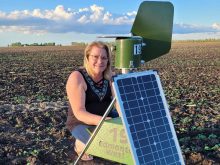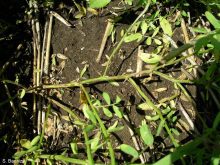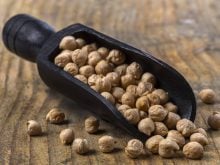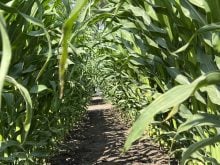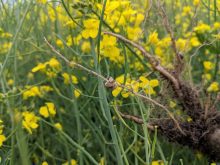Plant pathologists are still sorting through the data, but 2023 may become the year that verticillium stripe emerged a major problem for canola growers in Western Canada.
In 2022, Saskatchewan Agriculture staff discovered verticillium is a common disease in the eastern part of the province.
In the fall of 2023, producers in other parts of Saskatchewan also found it in their canola.
Other stories in the 2023 Canola Yearbook:
- Decent yields in dry times
- Canola views – photo essay
- Canola growing season in review
- Spraying in dry times can be tricky
- Flying the fields
- Hormone imbalance suspected for malformed racemes
- Incorporating resistant traits weighs on yields
- Production briefs
- Pest roundup: Canola pests kept in check by dry conditions
- Canola news briefs
- Canola growers scramble to address federal policy issues
- What happens when the big crop comes?
- Bids tumble but canola demand is firm
“I’ve got verticillium in Davidson like you wouldn’t believe,” said Rob Stone in late September.
“Verticillium is going to be something to watch for in canola,” added Stone, who farms near Davidson, midway between Regina and Saskatoon.
The appearance of verticillium stripe is new for many canola growers, who probably heard about the disease but have never seen it on their farm.
The fungus, Verticillium longisporum, infects canola and produces tiny, pepper-like sclerotia on or inside the stem of the plant. The sclerotia fall on the soil and crop stubble after harvest. The small particles move with the wind and water to other locations. Farmers can also pick up the fungus on their boots and transport it to other fields.
Verticillium interferes with the uptake of water and nutrients. Symptoms include early ripening, plant stunting and leaf chlorosis, which is yellowing of the leaf tissue. The symptoms usually appear late in the growing season.
Plant disease experts don’t fully understand the impact on canola yields.
Results from Europe, on oilseed rape, suggest it can cause 10 to 15 percent losses.
Farmers in central parts of Saskatchewan, near Humboldt, also noticed verticillium in their canola this fall.
In 2022, Saskatchewan Agriculture conducted a verticillium survey in the eastern part of the province.
Researchers found it in 16 out of 25 fields.
“This year, we are going to cover the whole province after harvest and we’ll at least look at 100 fields for verticillium stripe to see what is the risk,” Alireza Akvahan, provincial plant pathologist, said in February.
The results of the verticillium survey were not available in time for publication.
However, it’s clear that the disease is moving west and north.
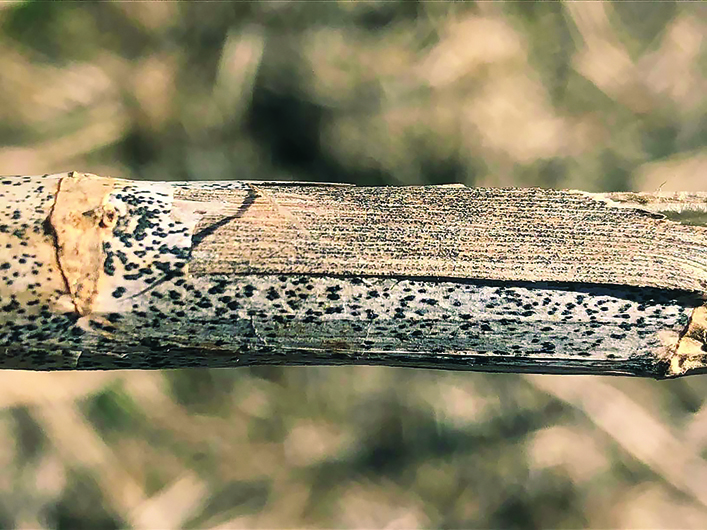
Verticillium was first discovered in a canola field near Winnipeg in 2014. It has since spread across Manitoba. A disease survey from 2022 found verticillium in 40 percent of Manitoba canola fields.
This year wasn’t as bad.
A Manitoba Agriculture disease survey, with preliminary data, found it in 25 percent of fields. Verticillium may also be in Alberta, but not officially.
“Last year, we found suspicious symptoms in seven fields, but again could not confirm verticillium,” Mike Harding of Alberta Agriculture said in August.
“(It’s) not likely well-established here,” Harding added. “(But) I believe most will not be surprised if it increases in prevalence over time, the same as it has done in Manitoba and (Saskatchewan).”
How is it spreading?
With its tiny size, wind and water can easily move the micro-sclerotia of verticillium from field to field. Farm machinery can also transport the sclerotia.
But a former Canola Council of Canada agronomist believes another factor is exacerbating its spread — straight combining.
“We cut through the inoculum source (in the stem) at harvest. So, we are cutting right through all the micro-sclerotia and they are going everywhere,” said Justine Cornelsen, the agronomic and regulatory services manager with BrettYoung Seeds, in December 2022.
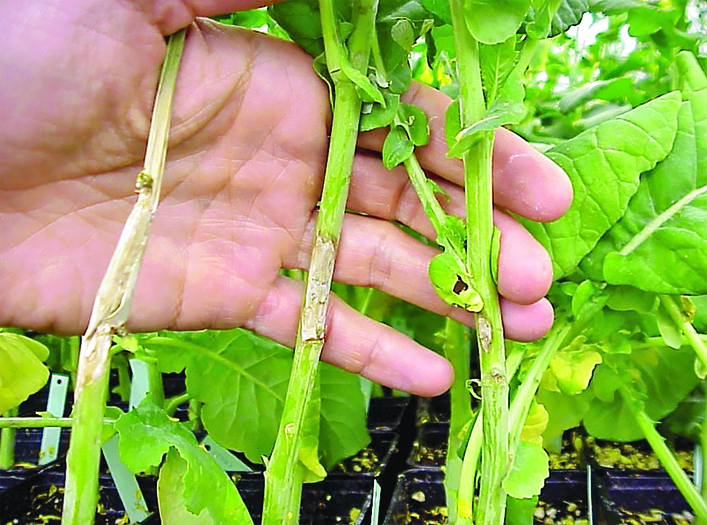
Good news: there is genetic resistance
Since it first appeared near Winnipeg, plant pathologists at the University of Manitoba got a head start on studying the disease.
They have studied numerous canola lines and learned some lines are resistant.
“I don’t know if they’re commercial (varieties) or not. The companies do not share that information with me,” Dilantha Fernando, a University of Manitoba plant pathologist, said in July.
“They could be in the pipeline. They could be elite material. That part I don’t know. (But) this is good news for the (canola) industry.”
Dry year equals less disease
In years with higher humidity and rainfall, sclerotinia is commonplace in canola fields across Western Canada. For instance, the percentage of fields with sclerotinia was 40-56 percent in 2022.
Those numbers will likely be much lower this year, because of the dry spring on the eastern Prairies and persistent drought in western Saskatchewan and southern Alberta.
The preliminary disease survey in Manitoba, detected sclerotinia in only seven percent of fields.
But another disease was more common than usual, at least in certain parts of Western Canada.
More aster yellows?
In May, Tyler Wist was worried that 2023 would be a heavy year for aster yellows, a disease that causes canola plants to turn blue green, develop misshapen seeds and stand taller than healthy plants.
Wist, a field crop entomologist with Agriculture Canada in Saskatoon, had collected samples of aster leafhoppers at 11 sites in Saskatchewan. He found a high percentage of the hoppers were infected with aster yellows.
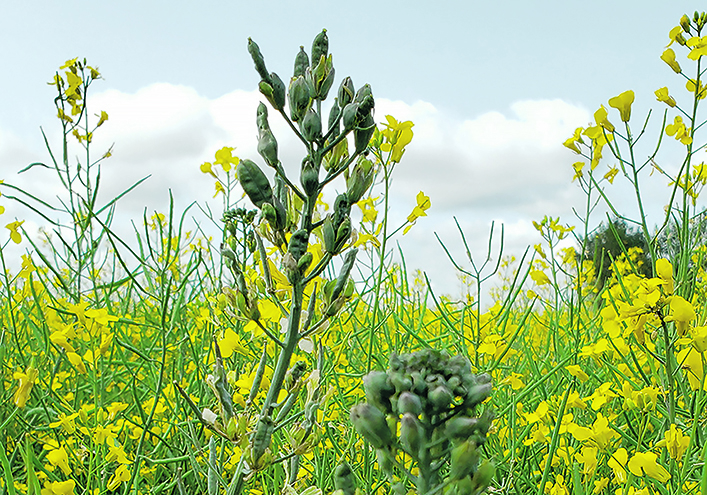
“Of those 86 (samples)… 11 were positive for aster yellows,” he said. “That’s a 13 percent rate of positive.”
In a more typical year, only one percent of aster leafhoppers, which blow into the Prairies from the central United States, arrive with the disease.
There have been years, most recently in 2012, where aster yellows caused a “significant yield reduction for many growers across the Prairies,” says the Canola Council of Canada website.
The impact on overall yields in 2023 is still unclear. However, the Manitoba canola disease survey found that 20 percent of fields had aster yellows this summer, up from four percent in 2022.
Clubroot; the good and the bad
In March, Agriculture Canada shared positive news about clubroot.
Researchers with Ag Canada in Saskatoon have been studying the genetics of canola and brassica plants for more than a decade to identify sources of resistance to the disease.
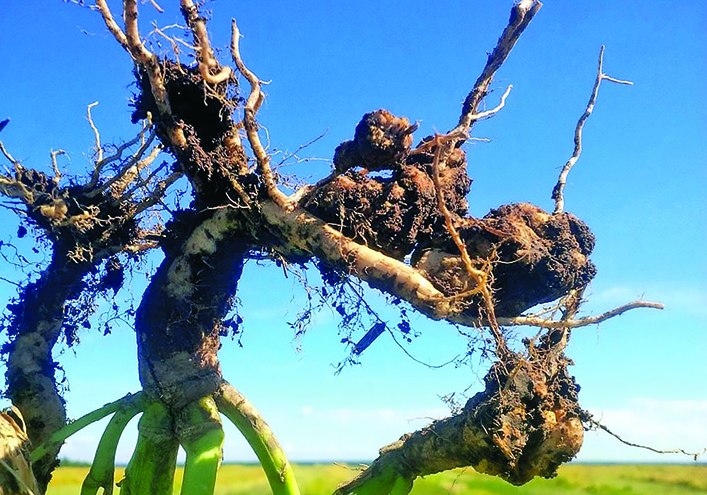
The scientists identified more than 20 clubroot resistant genes and markers that can be used in the fight against clubroot, a soil-borne disease that causes galls on the roots of canola plants, blocking water uptake.
“In the next couple years, I think (canola) growers definitely will have a choice of different cultivars and not (from) just one source. They can choose different sources of resistance,” said Fengqun Yu, the leader of the clubroot genetics study.
As part of the research, Yu and her team discovered two resistant genes that work in tandem against clubroot.
The finding could provide a “broad spectrum” of resistance to clubroot.
“It’s very interesting,” Yu said. “There are two genes that are interacting. Two genes work better than one gene. One plus one equals more than two.”
Meanwhile, testing in Alberta has discovered six new clubroot pathotypes that can overcome genetic resistance that’s built into canola.
University of Alberta researchers found 25 unique clubroot pathotypes in samples taken from 250 fields across the Prairies in 2019 and 2022. The survey results were published in the Canadian Journal of Plant Pathology earlier this year.
Seven of the races of clubroot were new and six can overcome genetic resistance in canola. For now, the new pathotypes are in a small number of fields, mostly in Alberta.
“I also don’t like it to sound all doom and gloom because, like I said, a lot of these pathotypes are only found in one to two fields,” said Keisha Hollman, a PhD candidate in plant science at the U of A.
“With this information, we can prevent the spread of a lot of these pathotypes so we can hopefully contain them in the areas that they are found.”
Sooty mould
A black waxy coating began showing up on canola crops in central Saskatchewan in late August. However, despite a number of social media comments stating it was likely Alternaria blackspot, that’s not the case.
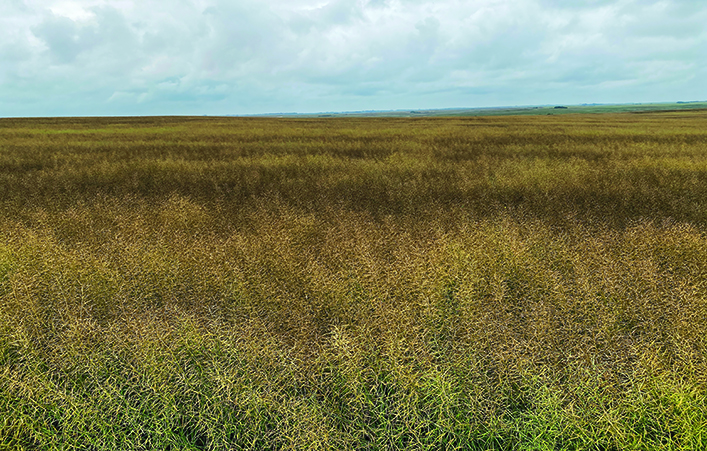
It’s the wrong time of year, said Kelly Turkington, a plant pathologist with the Agriculture Canada’s research centre in Lacombe, Alta.
“If you are seeing this grayish, black growth on a mature plant or parts of a plant that have been killed by something, that’s sooty mould,” said Turkington.
“However, if you have pods that are still green, green, green and you have distinct blackish lesions on the pods and you see symptoms on lower green leaves, then you are dealing with Alternaria blackspot.”
He said there is nothing you can do about sooty mould development.
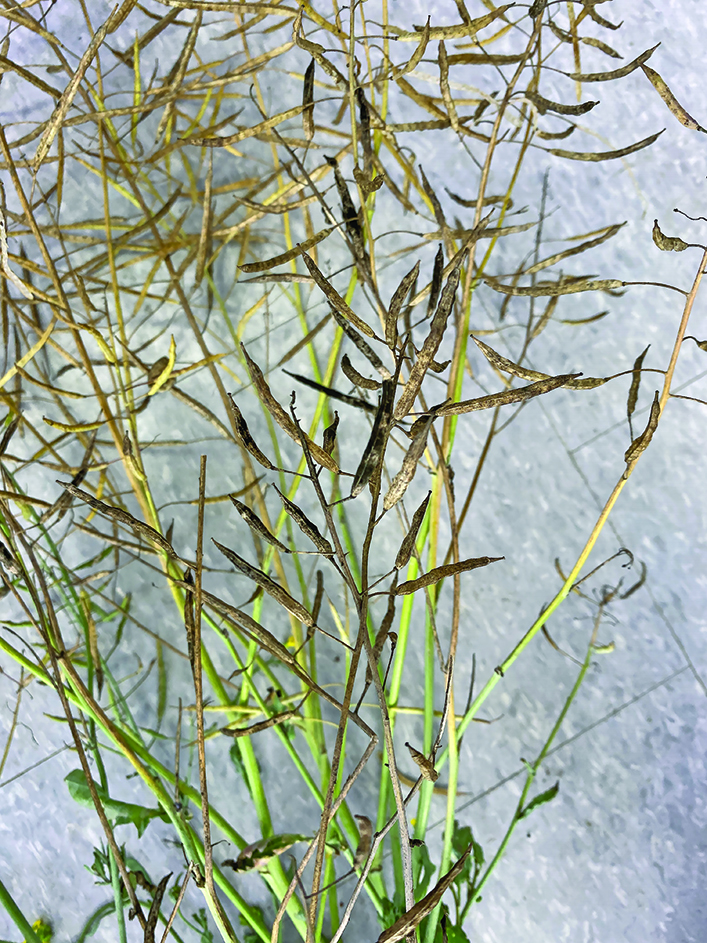
“It doesn’t typically cause yield loss. It might cause some discolouration of the grain and that gets downgraded due to weathering or microbial discolouration or load, but you normally don’t see much of an impact on yield.”
Contact robert.arnason@producer.com






